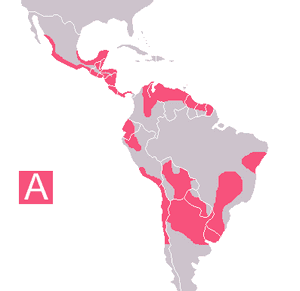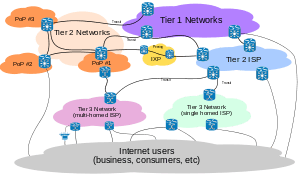
Was this the year open access for science reached critical mass?
One hypothesis suggests that a transformative group needs to reach one-third to be prominent and persisting.
Rogers’ theory on the diffusion of innovations that will eventually reach saturation level says the first 2.5% are innovators. By the time you get to 16% the phase of early adopters could be ending.
If that’s the trajectory that accessible scientific publications is on, one estimate suggests it went past early adopter level in 2011, when about 17% of scholarly articles were available within 12 months (12% immediately). There had been just under 8% published in open access journals in 2009.
Open access isn’t evenly spread among all disciplines though. One estimate of the growth of accessible publications indexed in the massive biomedical literature PubMed was that it grew from 27% of articles published in 2006 to 50% in 2010.
Pushing for and enabling open access began decades ago. It gained serious energy with the emergence of the open source movement and the internet. By the early 1990s publishing in physics was being re-imagined. PubMed arrived later that decade and its public access repository PubMed Central (PMC) went live in 2000. There are now thousands of open access academic repositories.
Open science is not just about access to publications, but encompasses open data, open educational resources and changes throughout the process of sharing, discussing and replicating scholarly findings. But the most basic access to those findings is the cornerstone.
Public debate, policy and infrastructure about access to publications gained momentum in 2013. By the end of the year, open access had been on the stage from the UN to the White House and The Colbert Report. Let’s do a quick month-by-month tour.
January: The year began with an awful jolt; Aaron Swartz’s suicide. Swartz had argued in his 2008 “Guerrilla Open Access Manifesto” that open access for science was “a moral imperative.” Read more about Swartz and the commitment to open access that led him to such despair in a recent post from Lawrence Lessig.
Caveat emptor applies when looking at open access publishing options. But the price drop emerging from the growth in low-priced options is an important element for diffusion. In January, an online comparison tool for cost-effectiveness of open access journal publications was released, showing that the priciest options don’t necessarily deliver authors more citations.
The Latest on: Open science
[google_news title=”” keyword=”Open science” num_posts=”10″ blurb_length=”0″ show_thumb=”left”]
via Google News
The Latest on: Open science
- Open Science and Agroecology: A Conversation with Miguel Ángel Núñezon April 26, 2024 at 9:00 am
An independent researcher argues that Venezuela is undergoing an agroecological transition and explains its importance.
- Sci-fi open-world action RPG GALIX: New Horizons announced for PS5, PCon April 26, 2024 at 5:00 am
New Horizons, a science-fiction open-world action RPG coming to PlayStation 5 and PC via Steam. A release date was not announced.
- Google Thinks It Can Cash In on Generative AI. Microsoft Already Hason April 25, 2024 at 6:29 pm
While both Alphabet and Microsoft boasted strong quarterly earnings, only one tech giant showed that its generative AI bet is starting to pay off.
- Science campus to welcome public at first open day in eight yearson April 25, 2024 at 5:00 pm
Harwell Science and Innovation Campus is set to welcome visitors for the first time in eight years when it opens its doors in June.
- New exhibit to open at NC Museum of Natural Scienceon April 25, 2024 at 3:52 pm
The Dueling Dinosaurs exhibit is a community celebration of STEM innovation in NC. Which new uniforms are winners this season? What would a mock draft look like using just betting odds?
- Young women in Science talent search applications now openon April 25, 2024 at 2:40 pm
Applications are now open and will be accepted until May 19, 2024. For detailed information on the eligibility criteria and application procedures, please visit www.forwomeninscience.com. The talent ...
- Vast DNA tree of life for plants revealed by global science team using 1.8 billion letters of genetic codeon April 24, 2024 at 8:00 am
A new paper published today (April 24) in the journal Nature by an international team of 279 scientists led by the Royal Botanic Gardens, Kew presents the most up-to-date understanding of the ...
- Is the Science journals editor showing remorse?on April 23, 2024 at 1:30 pm
Hauled in front of Congress recently, Science Editor-in-Chief Holden Thorp showed signs of being open to views other than his own, which may be a first for him.
- Breaking knowledge barriers: The need for open-access in scienceon April 22, 2024 at 11:21 am
The internet serves as a haven of scientific information, representing an era where the knowledge of anything we wish to know is available at our fingertips. Yet in many ways, accurate, firsthand ...
- Empowering Global Climate Efforts: NASA’s Integration of AI and Open Scienceon April 20, 2024 at 6:12 am
To construct an expansive foundation model, we acknowledged the necessity for collaboration beyond a singular entity,” Maskey stated. “Our endeavors surrounding foundation models have been accessible ...
via Bing News










